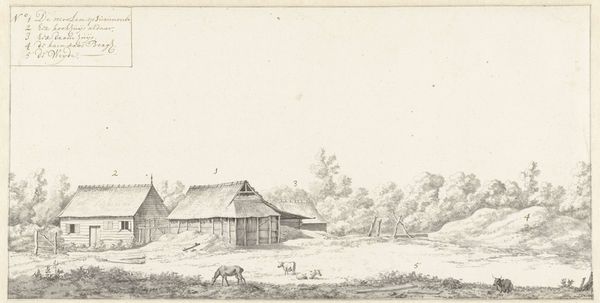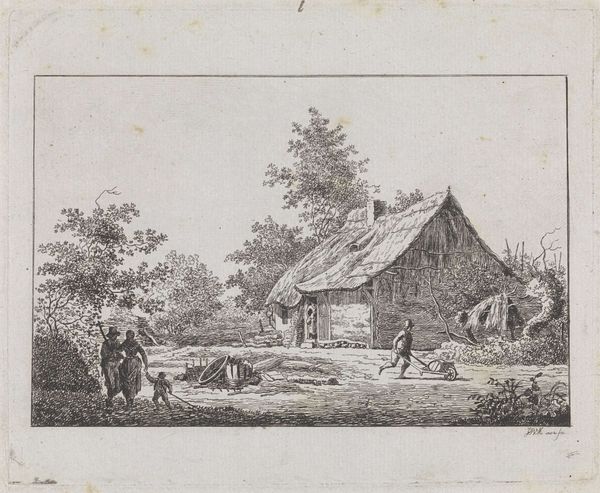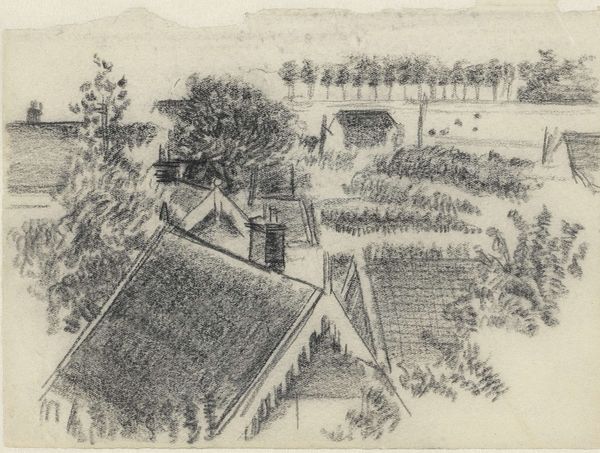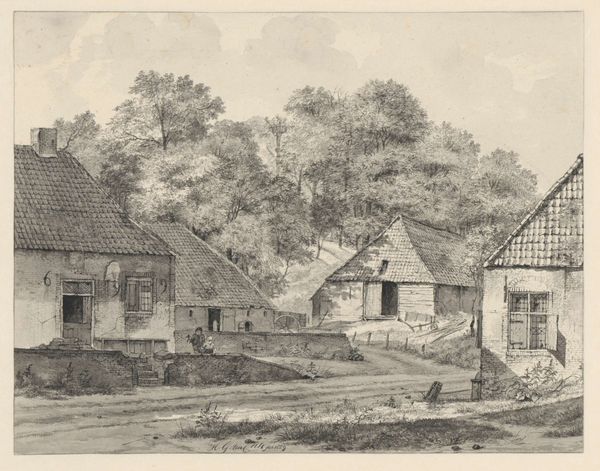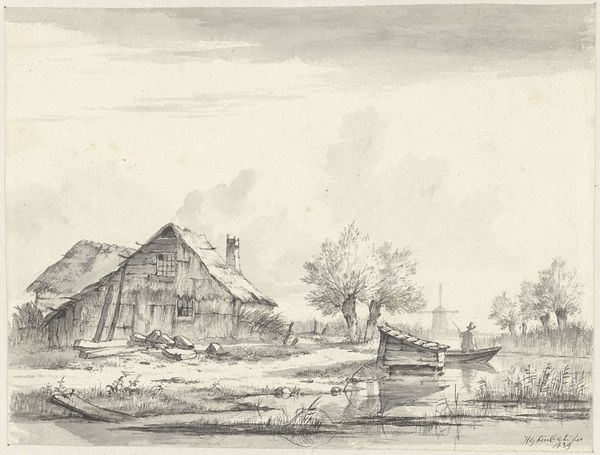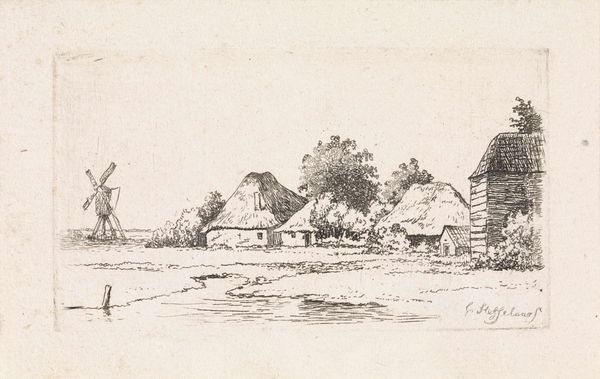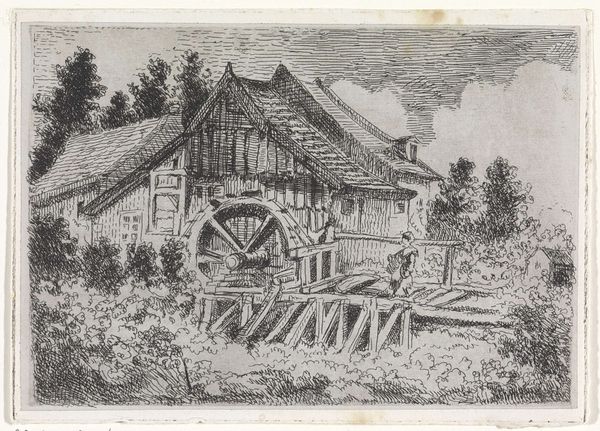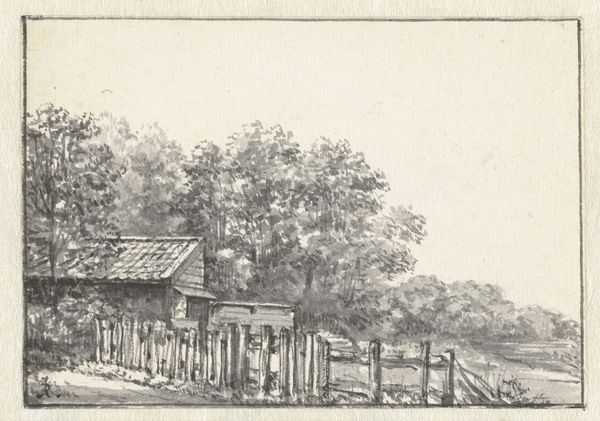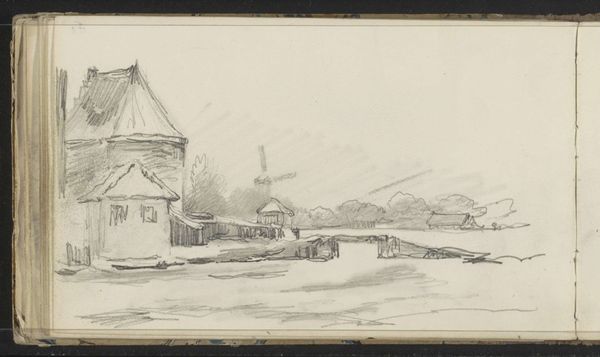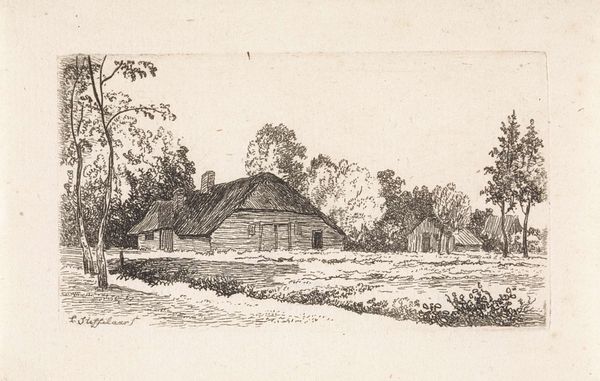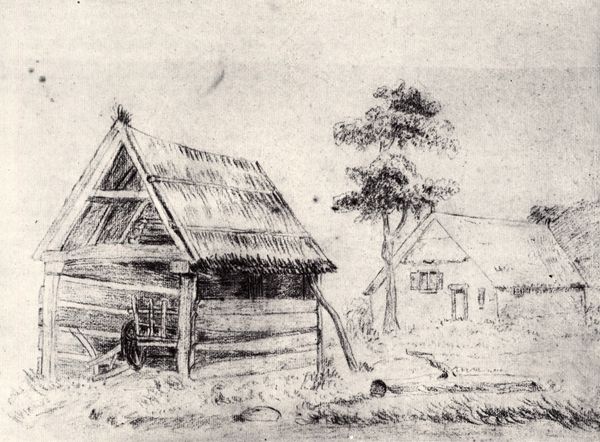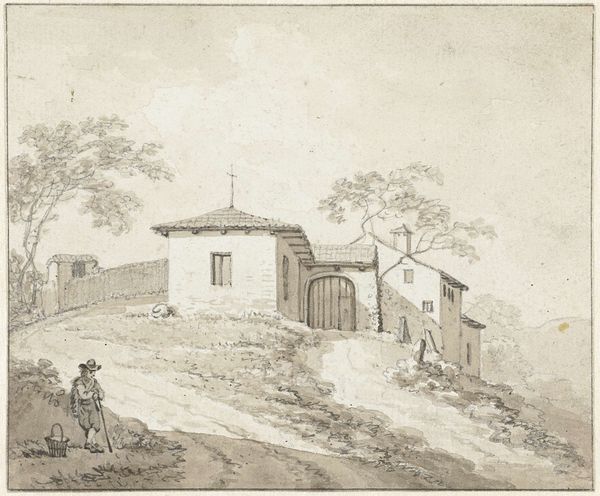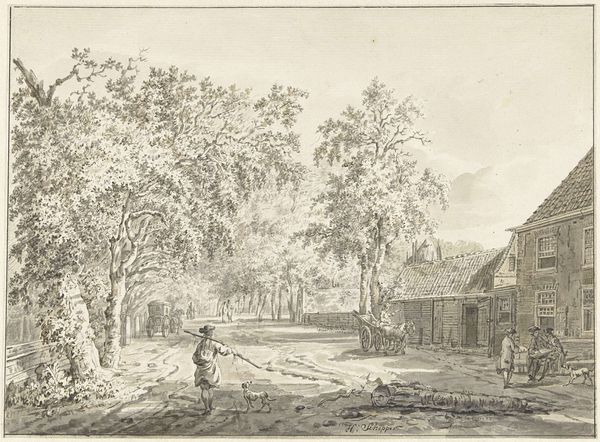
print, etching, engraving
#
aged paper
#
quirky sketch
#
dutch-golden-age
# print
#
etching
#
old engraving style
#
sketch book
#
landscape
#
personal sketchbook
#
sketchwork
#
pen-ink sketch
#
pen work
#
sketchbook drawing
#
sketchbook art
#
engraving
Dimensions: height 105 mm, width 197 mm
Copyright: Rijks Museum: Open Domain
Editor: Here we have Wenceslaus Hollar’s "View of a Watermill," an etching from the mid-17th century, on display at the Rijksmuseum. I find myself drawn to the meticulous detail and how the artist has captured the everyday lives of the people here. How do you interpret the symbolism embedded in this scene? Curator: It's fascinating how Hollar, though working in the tradition of topographical prints, infuses such everyday scenes with subtle layers. Notice how the watermill, the central element, symbolizes both progress and the ceaseless flow of time and life. What stands out to you about the figures populating the landscape? Editor: They seem so deliberately placed, not quite at work but definitely active. They’re like…archetypes? Curator: Precisely. Consider the psychological weight of their positioning. They’re part of a continuum. They activate the landscape. This landscape, by the way, isn’t merely representational; it speaks to the Dutch identity itself, their ingenuity in harnessing nature. How does Hollar's choice of etching as a medium enhance these meanings? Editor: The fine lines create a sense of detail, almost hyper-reality. Is that connected to the Dutch obsession with recording and mastering their world? Curator: Exactly! The etching allows for intricate detail, mirroring the Dutch emphasis on observation and their mercantile mindset – a world seen, cataloged, and thus, symbolically owned. Do you think this impacts our contemporary reading of the work? Editor: It adds another layer of appreciation, I think. It moves beyond just seeing a landscape to understanding a cultural perspective and the history embedded in these images. Curator: Indeed. It reminds us that images are never neutral; they are laden with historical, cultural, and psychological significance that continue to resonate through time.
Comments
No comments
Be the first to comment and join the conversation on the ultimate creative platform.
